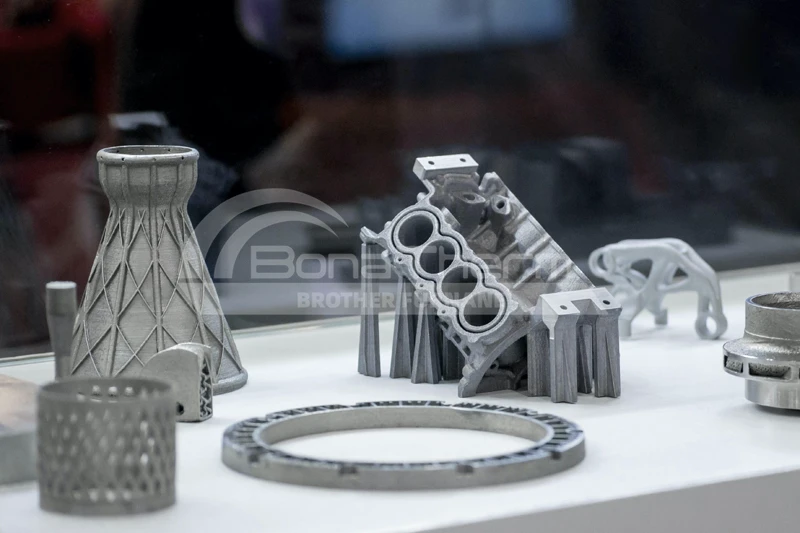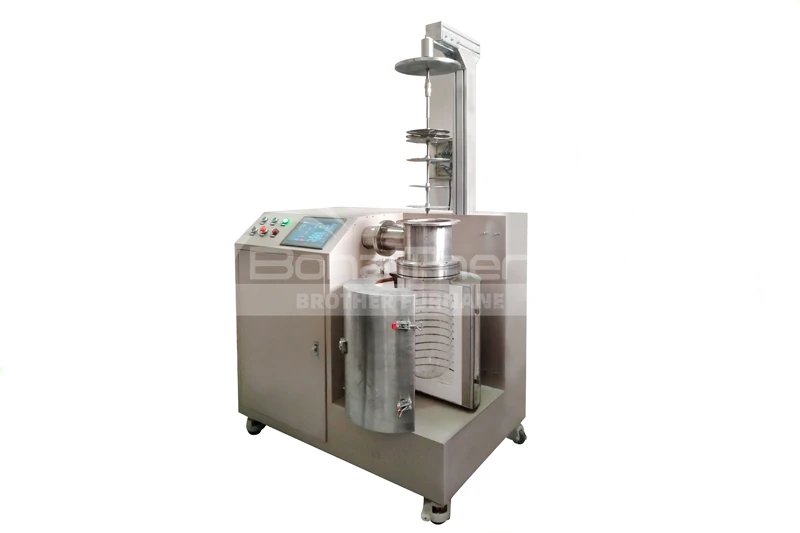Mastering the Operation of Tungsten Vacuum Furnaces
As a leading solution for high-temperature processes in industrial
applications, tungsten vacuum furnaces have revolutionized thermal
processing.
These furnaces leverage the unique properties of tungsten, a metal renowned for its remarkable durability, high melting point, and exceptional performance under vacuum conditions.
Furthermore, tungsten’s ability to retain structural integrity in extreme conditions allows these furnaces to deliver consistent and reliable results. For industrial users, this translates to more efficient workflows, fewer material defects, and enhanced equipment longevity.
Industries ranging from aerospace to materials science rely on tungsten vacuum furnaces for applications such as vacuum heat treating procedures, advanced metal sintering, and high-purity material processing.
This guide of Brother Furnace covers the fundamentals of operating these furnaces, their
essential features, maintenance tips, and safety precautions, making it a
valuable resource for professionals seeking optimal furnace performance.
Key Features of Tungsten Vacuum Furnaces
A clear understanding of the capabilities and design of tungsten vacuum furnaces is critical for optimizing their use. These features make tungsten-based furnaces ideal for industries requiring precise control over high-temperature processes in vacuum environments.
High-Temperature Capabilities: One of tungsten’s most valuable properties is its melting point of over 3400°C, which enables high-temperature vacuum processing techniques that other materials simply cannot withstand. This high-temperature capacity ensures that tungsten vacuum furnaces are suitable for processes requiring extreme heat.
Superior Vacuum Performance: Vacuum furnace material selection is critical, and tungsten’s resistance to oxidation and contamination under vacuum conditions maintains the purity and integrity of treated materials. The furnace’s structure supports efficient evacuation and achieves desired vacuum levels, a feature crucial in thermal processing applications for tungsten furnaces.
Durability and Longevity of Tungsten Elements: Tungsten is inherently resistant to thermal wear, making it an excellent choice for refractory metal furnace management. This durability means fewer replacements, resulting in reduced downtime and lower operating costs over time.
Precise Temperature Control: Consistent and accurate vacuum furnace
temperature control is essential, especially in applications where even slight
temperature deviations could lead to product defects. Tungsten allows for stable
heating, ensuring precise temperature management.
Uniform Heat Distribution: The design of these furnaces facilitates even heat distribution, minimizing hot spots and ensuring uniform treatment of materials. Uniform heating is particularly important in applications that demand consistent results across various load sizes.
Step-by-Step Operating Instructions
Operating a tungsten vacuum furnace involves several stages, each with its own specific requirements to ensure safety, efficiency, and performance.
Pre-Operation Checks
● Vacuum System Integrity: Before every use, inspect all seals, valves, and connections in the vacuum system to ensure no leaks are present. Leaks could compromise the vacuum and lead to contamination or process inefficiencies.
● Power Supply Connections: Verify that the power connections are secure, particularly for high-voltage systems. Tungsten furnaces operate at high temperatures, which demand stable power inputs.
● Cooling System Functionality: Check the cooling system to prevent overheating, as a functional cooling system is crucial to prevent thermal strain on the tungsten wire mesh installation and care components.
Loading the Furnace
● Proper Placement of Materials: Loading materials uniformly is essential for
achieving consistent heat distribution. Ensure that materials are spaced
appropriately to avoid hot spots and uneven thermal exposure.
● Considerations for Different Load Sizes: Large loads require adjustments in placement to ensure even heating, while smaller loads may need adjustments in temperature and holding time.
● Setting Up the Vacuum: Achieving optimal vacuum levels is essential. Evacuate air from the chamber slowly and thoroughly, as optimizing vacuum performance in furnaces helps maintain the purity of materials and enhances process accuracy.
Programming the Heating Cycle
● Temperature Ramp Rates: Set gradual temperature increases to prevent thermal shock to both materials and the furnace components. Tungsten, while durable, can still be affected by sudden, extreme temperature changes.
● Holding Times: Define specific holding times to allow materials to reach and remain at desired temperatures. Holding time should be carefully monitored to prevent over-processing.
● Cooling Rates: Manage cooling rates to avoid rapid temperature drops, which can cause stress fractures in treated materials or damage to the furnace elements.
Monitoring the Process
● Key Parameters: Monitor parameters such as temperature, pressure, and time
to ensure the process stays within defined limits.
● Using Data Logging Systems: Advanced data logging systems enable real-time tracking, making it easier to maintain quality control and ensure process consistency.
Maintenance Tips for Optimal Furnace Performance
To maintain the longevity and performance of tungsten vacuum furnaces, regular maintenance is required:
● Inspection of Tungsten Mesh: Inspect tungsten mesh periodically for any signs of wear, as consistent tungsten element performance is crucial for high-temperature operations.
● Cleaning the Vacuum Chamber: After each use, clean the chamber to remove residues that could affect future processes.
● Maintaining Vacuum Pumps and Seals: Check vacuum pumps and seals for leaks. A compromised vacuum pump can lead to inefficient operation and contamination.
● Temperature Control Calibration: Regularly calibrate temperature controls to ensure the furnace maintains accurate and consistent temperatures.
● Implementing a Preventive Maintenance Schedule: Develop a schedule for
inspecting all components, which will extend the furnace’s operational life and
ensure reliable performance in vacuum heat-treating procedures.
Safety Precautions
Ensuring the safe operation of tungsten vacuum furnaces involves several critical measures:
● Personal Protective Equipment (PPE): Operators should wear appropriate PPE, such as gloves, safety goggles, and thermal-resistant clothing.
● Electrical Safety: Make sure all electrical systems are properly insulated to prevent electrical hazards.
● Thermal Hazard Prevention: Due to the high temperatures involved, take precautions to avoid accidental burns. Install shields around the furnace and label high-temperature areas.
● Proper Handling of Processed Materials: Handle all materials carefully, as they may retain heat even after removal from the furnace.
● Emergency Shutdown Procedures: In the event of an emergency, be prepared to quickly power down the furnace while preserving the safety of operators and equipment.
Brother Furnace: A Professional Tungsten Vacuum Furnaces Manufacturer
Tungsten vacuum furnaces are an essential asset in modern industries
requiring extreme temperatures and precise vacuum conditions. By following
proper operating instructions, maintenance tips, and safety protocols, operators
can maximize their furnace’s potential while ensuring safe and efficient
operation.
The use of tungsten as a heating element offers distinct advantages, such as high-temperature stability and resistance to wear, which translate into increased productivity, better-quality materials, and long-term cost savings.
Brother Furnace offers a range of tungsten vacuum furnaces specifically designed to meet the rigorous demands of modern industry.
For a personalized consultation or to learn more about our vacuum furnaces and thermal processing applications for tungsten furnaces, contact us today. Our team is dedicated to helping you achieve peak furnace performance and long-lasting operational success.











